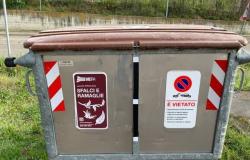Increase your income, poor labor is growing. Tuscany is moving backwards in a very worrying way: in the last 20 years it has lost 48 positions in the ranking of Italian regions drawn up on the basis of the European ranking of GDP per capita, falling to 99th place from 51st. Only Umbria did worse. He reports it Ires, the Institute for Economic and Social Research of the CGIL in a report presented yesterday on the occasion of the union’s fiftieth anniversary. Ires sets the gross annual income bar at 15 thousand euros: below that you can say that you are poor even though you work. In Tuscany, 58% of employees are below the bar. We have an audience of 650 thousand people who are poor even if they work. A dramatic fact.
Going into the detail of the INPS data processing, it emerges that less than 40% of Tuscan workers have a full-time permanent contractwhile 125 thousand people (11%) «add up all aspects of precariousnessworking time as definedterminated, part-time and discontinuous employment and do not reach 7 thousand euros in annual gross salary”. Then there are almost 380 thousand workers who do not reach 11 thousand euros in annual gross salary: they are 34% of the total.
«This data is an indication of how much the weak tertiary sector based on tourism and trade lowers the overall wage billin the face of the weight of platform capitalism which is supplanting the more structured forms, albeit weak from the point of view of work, tourist reception and the administration of food and drinks – says the president of Ires, Maurizio Brotini – A trial, that of the weak tertiary sector and the loss of qualified jobs also resulting from the movement outside the region of the decision-making or high qualification centers of various sectors, valid for the banking and insurance system as well as for the conglomerate represented by Ferrovie in the various structures, which adds up to the continuous erosion of the manufacturing system, be it industry, district systems and craftsmanship”.
Losing manufacturing and the “head” of large companies of advanced services, focusing on income and tourism generates poverty. Furthermore, according to Ires, «the Irpet reports, the same notes and half-yearly reports of the Bank of Italy for the regional reality and the consequent debate of local and regional politics often underestimate the decline and the social and territorial polarization that a in our opinion characterize Tuscany”. We are worse off than we tell ourselves.
However, Tuscany still maintains a very good position today if we look at indicators other than income from work. Broadening the field to well-being criteria (which take into consideration, for example, health, social relations, safety, the landscape and the environment, the quality of services) Tuscany rises in the ranking and shows some very high peaks: Florence, for example, has a well-being indicator by over 72 percentage points out of 100. According to Ires, this could depend on a “carry-over effect” due to the “past presence of a more robust industrial and manufacturing system” and more capable of redistributing wealth through wages. So much so that in Tuscany the average amount of pension income is higher than the average amount of salary from employment. In summary, some pensioners and those who can count on an income are still doing well. The workers, on the other hand, are not doing so well and are also aware of it: another research conducted for the CGIL by Osservatorio Futura and Fondazione Di Vittorio says that when asked about satisfaction with their work, 31% of the sample interviewed said they were satisfied, the 69% not satisfied. And the under 35 age group is especially dissatisfied.



